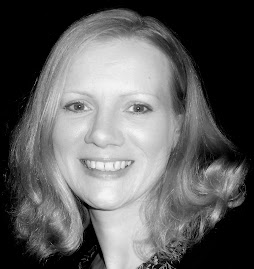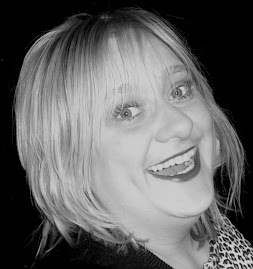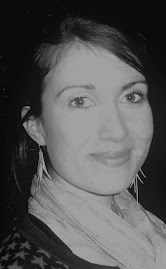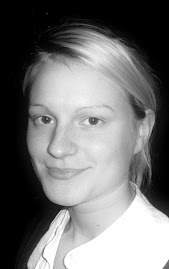Sunday was a bit of a daunting prospect for me, as I had been asked to lead a work-shop with the girls, by the director. She was hoping to get the girls to develop a 'gesture' which they felt best represented their characters, plus help them understand a little of how, developmentally, Leasa was intending to focus the action and acting in the differing scenes of the play. The daunting aspect of this for me was two-fold; One, I was doing a work-shop with teachers (most of the girls professions) of which two of them are Drama teachers, and Two, This was my first official work-shop session that I had ever lead. No pressure then.
I decided early, and with Leasa's lead, that I should focus on the different acting techniques Leasa was looking to adapt to the performance; Stanislavski and Brecht. I also knew that I had a limited amount of time in which to convey a general idea of these techniques to the actresses.
I therefore began with having the cast stand in a circle and imagine a beam of light around them. The only things they could see were the clothes their 'historical' characters were wearing, taken from each of their characters periods in time, eg; Pope Joan's attire from 854-856ad. Each actress then chose a single moment from their particular characters period and focused on their clothes from that moment. For Marlene and the Waitress, their particular histories began 5 mintues before the resturant scene began (The Waitress), and one hour before the scene (Marlene). This technique of visualisation and imagination is a technique mentioned in Constantin Stanislavski's book 'An Actor Prepares', in the titled section 'Imagination'. In order for an actor to fully immerse themselves into becoming a character, Stanislavski believed in using certain methods, including 'Circles of Concentration'. In this technique an actor or actress is encouraged to fully engage their imagination and visualise the world around them in great detail. Obviously to start with a blank page as it were and blindly come up with a characters surroundings would be asking a lot. So each character is given a reference point from which to start. For the historical characters in this play, this was easily created as they had time periods, places and cultures from which to work. As the technique also called for a lot of detail, the Circle of Concentration method was divided into three seperate circles. The first one being the beam of light mentioned above.
I asked each of the actresses to not only describe the clothes, in detail (patterns, colours, etc.) that they were wearing, but also the feel of them, the state of them, their weight and comfort, etc. Each actress in turn took a good few mintues describing in detail their attire, with some of them even phyiscally feeling or animating the clothes to the rest of the group in order for each of us to 'see' what they had.
From that I moved onto the Second Circle of Concentration, the immediate world around them. I told them that the beam of light around them was expanding to reveal what they could now see to their left, right and front. The images they produced were from the period they came from, rather than the time they appear together in the resturant scene. And again not only did I ask them for what they could see, but also things like the weather, the temperature, sounds and the like.
For the final Circle, I altered the technique a little and asked each of the characters how they felt emotionally about the world around them. Where they comfortable in the place they found themselves? Did they recognise it? How did they feel about their life up until this point? What were their immediate thoughts and feelings? What might they be thinking about in terms of their future?
It must be noted that there is no right or wrong answers for any of the questions or descriptions that any of the actresses came up with. This is a technique designed to encourage the actress, or actor, to see, and feel, a little more of the character they are portraying. One of many of Stanislavski's methods.
Now I wanted to introduce a little of the acting techniques of Brecht, a very stylised method designed to introduce audiences to the injustices and questionable practices of the world around them. One particular technique that Brecht wanted his actors and actresses to do, was NOT to immerse themselves in the world of their characters. He wanted his audiences to be fully aware that they were watching a performance, not to get lost within a world of fantasy and fiction that appeared on the stage. In order to achieve this, one method he wanted to employ involved getting his actors and actresses to 'demonstrate' characters. For example, take the comedian Billy Connolly, one of the best exponents of this particular type of acting (though funnily enough he may be unaware of it). Whenever Billy describes his past, or people he has met, he breifly acts out the encounter for humourous effect. The audience are fully aware that they are watching Billy portray someone else. They never, for a second, forget that it is Billy they are watching, because he doesn't immerse himself into the world of that character and therefore draw the audience into a fictional world where the audience start feeling sympathetic towards that someone. So, for an actor or actress using this technique, when they themselves are seen doing something decidedly uncomfortable on stage, the audience, rather than sympathise with the character, question the reason for the actor or actress to do what they are doing, and what kind of world would allow that to happen.
The actions that Billy Connolly performs on stage, Brecht called 'gestus'. Each action performed by the actresses during the resurant scene would also be 'gestic' in nature, stylised and exaggerated. The resturant scene lends itself more towards Brechts methods than Stanislavskis, mainly because the scene involves characters from different time periods. A little illogical for Stanislavski's methods.
I asked each of the actresses, in two groups of two, and one of three, to come up with a gesture, 'gestic' in nature, that best represented their individual character. A tall order indeed, considering the vast histories and achievements of their characters. So I also asked them to narrow down their choice to a gesture that was either symbolic of their character, and what their character represented to women, or metaphoric of the struggles or feelings of their character, or representative of what their character might be seen doing normally within their particular culture and time.
After asking each actress individually what gesture they had come up with, I then asked the particular groups to devise a short 30 second performance, devised around the imaginary situation they had created for themselves previously using the Cirles of Concentration. Each actress also had to incorporate the gesture they had come up with into the performance.
These techniques, that I adapted and used, were to help, not only demonstrate a little of the acting methods Leasa wanted to utilise in the play, but also to introduce any of the girls that were not aware or knowledgable about them, some of the techniques Stanislavski and Brecht used. It may seem slightly bizzare to have used a Stanislavski method for what will essentially be Brechtian historical characters, but as the girls will be playing the 'Top Girl' agency staff and applicants naturalistically, a brief introduction to Stanislavski himself would allow the girls to utilise to technique of Circles of Concentration for these characters, and possibly seek out more techniques along similar lines. The gestures that each of the cast developed for they own historical characters will also be seen and used during the performance as well, specifically during the resturant scene. This possibly includes the Waitress and Marlene.
I personally thought the work-shop went very well for my first, but its benefits can only be felt by the actresses involved, and possibly seen by the director and audience. I invite them to comment honestly about the experience. I hope this blog proves useful in any research, debate or discussion you wish to use it for. Thanks for taking the time to read this.
Monday, February 25, 2008
Subscribe to:
Post Comments (Atom)







No comments:
Post a Comment